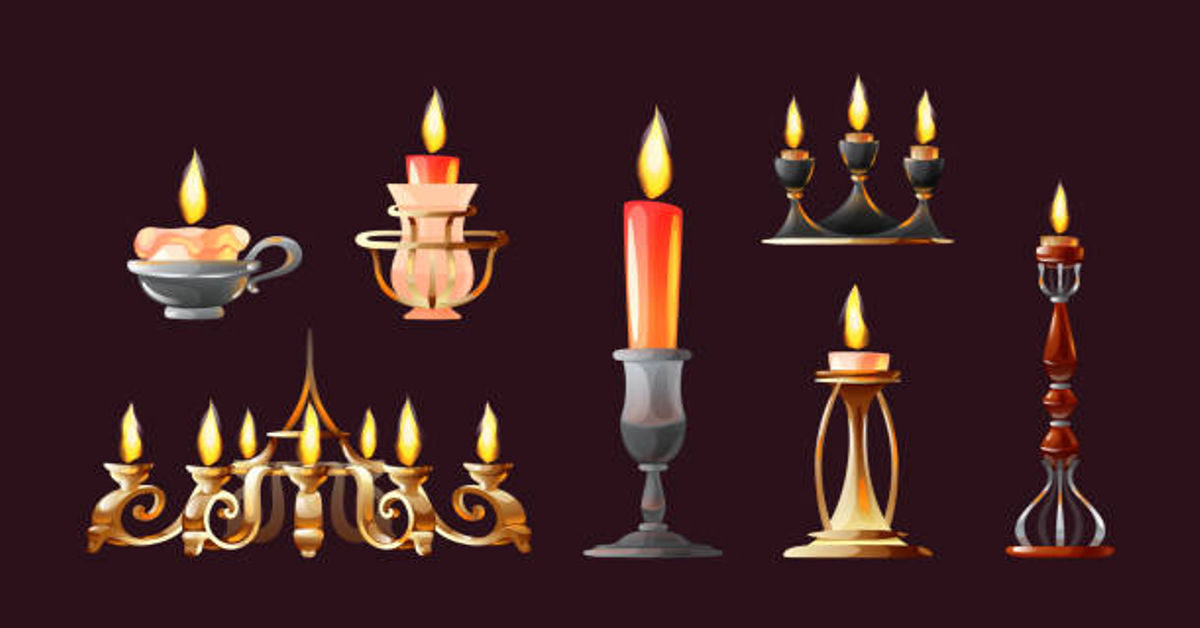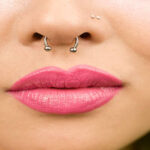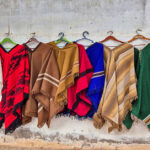The word candelabra immediately evokes imagery of regal halls, grand dining tables, and ceremonial settings illuminated by soft candlelight. Despite their long history, candelabras remain relevant today as artistic décor pieces, symbolic ceremonial objects, and functional lighting accents that blend tradition with modern style. Far more than simple candle holders, they represent craftsmanship, cultural heritage, and human ingenuity in enhancing spaces with warmth and elegance. This comprehensive guide explores every aspect of candelabras—from their origins and evolution to their construction, symbolic significance, and contemporary applications.
1. Introduction to Candelabras
A candelabra is a branched candleholder designed to hold multiple candles at once. While its basic purpose is illumination, the candelabra distinguishes itself through its elaborate forms, ornate detailing, and architectural-like branching arms. Many models feature two or more arms extending symmetrically from a central column, but modern interpretations now offer asymmetrical or minimalist versions.
Historically, candelabras were much more than decorative pieces. Before electricity, households relied heavily on them as sources of light, especially during gatherings or nighttime rituals. Their multi-arm design allowed several candles to burn simultaneously, producing stronger illumination compared to single candlesticks. As craftsmanship advanced, these objects became expressions of art, wealth, and spiritual symbolism.
Today, interest in candelabras continues to thrive. They serve as centerpieces at luxury events, decorative items in interior design, and meaningful objects in religious ceremonies. Their versatility has kept them relevant across centuries, proving that the glow of candlelight never goes out of style.
2. Historical Evolution of the Candelabra
2.1 Ancient Origins
The earliest ancestors of the candelabra can be traced back to ancient civilizations where people used primitive lamps made from clay or stone. Although not identical to modern branching candelabras, these early devices inspired future designs. Archaeological evidence from Egypt, Greece, and Rome indicates that multi-flame fixtures existed, often used in temples and palaces.
2.2 Classical Greece and Rome
In the classical periods, metalworking skills improved significantly, leading to more elaborate lighting fixtures. Bronze and iron became common materials, and designs began to resemble early candelabras. Romans used tall branched holders in both domestic and public spaces. Their symbolism also grew—light was associated with knowledge, purity, and divine rituals.
2.3 Medieval to Renaissance Development
During the medieval era, candelabras became central in churches and monasteries, symbolizing spiritual illumination. The Renaissance period elevated them further, thanks to flourishing artistry. Italian metalsmiths and European craftsmen produced intricately carved models featuring floral patterns, mythological motifs, and architectural influences.
2.4 17th–19th Century Grandeur
By the Baroque, Rococo, and Victorian eras, candelabras had become essential décor for aristocratic homes. Silver and gold models adorned banquet halls, while crystal candelabras graced palace ballrooms. These designs emphasized opulence, symmetry, and ornamentation.
2.5 20th Century to Modern Interpretation
With the arrival of electrical lighting, candelabras transitioned from necessity to decorative luxury. Modern designers reimagined them using minimalist styles, new materials, and contemporary silhouettes. Despite technological shifts, the symbolic and aesthetic value of candelabras remains strong.
3. Structure and Components of a Candelabra
Though candelabras vary in design, most share several core components. Understanding these elements helps appreciate their craftsmanship.
Table: Common Candelabra Parts and Their Functions
| Component | Description | Function |
|---|---|---|
| Base | The bottom platform supporting the structure | Provides stability and balance |
| Column/Stem | Central vertical support | Holds arms and elevates candles |
| Arms | Branch-like extensions | Carry multiple candle holders |
| Cups/Bobeches | Small cups beneath candle sockets | Catch dripping wax |
| Candle Sockets | Top portion where candles sit | Secure candles safely |
| Finial | Decorative top element | Adds aesthetic refinement |
Craftsmanship varies from simple molded pieces to hand-forged or carved designs. The combination of functionality and artistry is what makes candelabras enduring objects of beauty.
4. Materials Used in Candelabra Construction
Candelabras can be made from several materials, each offering different aesthetics, durability, and price levels.
4.1 Metal
Metals are the most traditional and durable option.
- Brass – Warm golden tone, classic appeal, resistant to corrosion
- Silver – Elegant finish, popular in ceremonial pieces
- Pewter – Darker, antique appearance
- Bronze – Strong, traditional, often used for historical replicas
- Wrought Iron – Rustic, industrial, and highly sturdy
Metal candelabras have longevity and often carry vintage value.
4.2 Crystal and Glass
Crystal candelabras, particularly those with hanging prisms, refract light in dazzling ways. These are common in formal events such as weddings and banquets. Glass models vary from clear to colored, adding decorative flair.
4.3 Wood
Wooden candelabras offer warmth and natural charm. Carved hardwoods such as oak, walnut, or teak are often used. They suit rustic, farmhouse, or bohemian décor styles.
4.4 Ceramic and Porcelain
Ceramic versions allow for artistic painting and glazing. They are more delicate but add refined ornamental beauty.
4.5 Modern Materials
Contemporary models may incorporate:
- Acrylic
- Resin
- Stainless steel
- Mixed media designs
These allow designers to create unconventional and artistic interpretations.
5. Types of Candelabras
Candelabras come in various styles depending on use, aesthetic, and cultural context.
5.1 Classic Multi-Arm Candelabras
These feature three, five, seven, or more arms. They are the most recognized style and often appear at formal events.
5.2 Floor-Standing Candelabras
Tall and dramatic, these models can reach over a meter in height. They are popular for ceremonies such as weddings or religious events.
5.3 Tabletop Candelabras
Designed for dining tables, mantels, and sideboards, these are shorter and more compact but still visually impactful.
5.4 Wall-Mounted Candelabras
Functioning similarly to sconces, wall-mounted versions save space while adding decorative illumination.
5.5 Religious Candelabras
Used in churches, temples, and rituals, these often carry symbolic meaning. For example, some traditions use seven-branched holders to represent spiritual concepts.
5.6 Electric Candelabras
These modern versions replace real candles with bulbs shaped like flames, providing a safer and more convenient alternative.
6. Symbolism and Cultural Significance
Throughout history, candelabras have held symbolic meanings in different cultures.
6.1 Symbol of Light and Purity
Across civilizations, candles represent clarity, guidance, and spiritual truth. Multi-candle fixtures amplify this symbolism.
6.2 Celebration and Ceremony
In weddings, festivals, and royal events, candelabras signify festivity, warmth, and abundance.
6.3 Spiritual Traditions
In many religions, candelabras symbolize divine presence, enlightenment, and sacred rituals.
6.4 Status and Luxury
Historically, owning ornate candelabras indicated wealth and artistic sophistication.
7. Modern Uses of Candelabras
While the functional need for candlelit illumination has diminished, candelabras continue to thrive in modern design and events.
7.1 Home Décor
Interior designers use candelabras to create focal points in:
- Dining rooms
- Entryways
- Living rooms
- Mantels
- Outdoor patios
Their presence adds elegance, warmth, and a sense of timeless beauty.
7.2 Event Decoration
Candelabras are staple décor pieces at:
- Weddings
- Banquets
- Gala dinners
- Corporate events
- Holiday gatherings
They enhance ambiance, especially when paired with floral arrangements.
7.3 Religious Use
Many faiths integrate candelabras into rituals, prayer sessions, and symbolic ceremonies.
7.4 Artistic Installations
Contemporary artists reinterpret candelabras in sculpture, interior design, and conceptual exhibitions.
7.5 Photography and Film
Directors and photographers use candelabras to create dramatic atmosphere, period settings, or romantic lighting effects.
8. Choosing the Right Candelabra for Your Needs
Selecting the ideal candelabra involves considering several factors.
8.1 Size and Scale
Match the candelabra size to the room or table. A towering piece on a small table overwhelms the space, while a small candelabra might appear insignificant in a grand hall.
8.2 Material Suitability
Choose materials based on style and durability:
- Metal for classic or vintage themes
- Crystal for elegant events
- Wood for rustic interiors
- Glass for artistic touches
8.3 Number of Arms
More arms create a grander visual effect, while fewer arms provide understated charm. Consider how much light and visual emphasis you want.
8.4 Style and Décor Compatibility
Your candelabra should complement the existing décor. Modern, minimalist pieces suit contemporary homes, while ornate brass models enhance traditional interiors.
8.5 Candle Type
Some candelabras require taper candles, while others accommodate pillar or LED candles.
Table: Matching Candle Types with Candelabra Styles
| Candelabra Style | Suitable Candle Type | Notes |
|---|---|---|
| Classic metal | Taper candles | Traditional and elegant |
| Crystal | Taper candles | Enhances light reflection |
| Rustic wood | Pillar or taper | Natural aesthetic |
| Minimalist | LED or slim taper | Clean, modern look |
| Floor-standing | Thick pillar candles | Provides bright illumination |
9. Maintenance and Care
Proper care ensures your candelabra remains in pristine condition.
9.1 Cleaning Metal Candelabras
Use mild polish or commercial cleaners appropriate for brass, silver, or bronze. Avoid abrasive materials that can scratch.
9.2 Handling Wax Build-Up
Place the candelabra in the freezer to harden the wax, making it easier to remove. Alternatively, warm water can soften wax for gentle removal.
9.3 Maintaining Crystal and Glass
Clean with a soft cloth and a gentle glass cleaner. Avoid harsh chemicals that could damage decorative coatings.
9.4 Preserving Wooden Candelabras
Dust regularly and avoid high humidity. Apply wood oil occasionally to keep the finish vibrant.
9.5 Preventing Tarnish
Store metal candelabras in dry places and use protective coverings when not in use.
10. Styling Tips for Using Candelabras
Whether for home décor or events, thoughtful styling enhances the beauty of your candelabra.
10.1 Dining Table Centerpieces
Position the candelabra in the middle of the table, paired with low floral arrangements to avoid obstructing conversation.
10.2 Mantel Display
Use a pair of matching candelabras or a single statement piece to draw attention.
10.3 Entryways
Place a tall floor-standing candelabra near the entrance for an elegant welcome.
10.4 Weddings
Incorporate flowers, greenery, or crystals to coordinate with the wedding theme.
10.5 Seasonal Decor
During holidays, dress your candelabra with ribbons, ornaments, or themed candles.
10.6 Outdoor Ambiance
Use weather-resistant models on patios or garden tables to create magical evening settings.
11. Safety Considerations
Although beautiful, candelabras involve open flames. Always follow safety guidelines.
- Keep away from curtains, paper, or flammable materials
- Never leave candles unattended
- Use drip protectors to manage wax
- Ensure the candelabra is stable
- Consider LED candles when safety is a concern
12. The Enduring Appeal of Candelabras
Across centuries, candelabras have remained one of the most enduring decorative objects. Their ability to merge light, artistry, symbolism, and craftsmanship ensures they continue to capture attention. Whether used for historical reenactments, modern weddings, religious ceremonies, or stylish home décor, the candelabra maintains its place as a timeless accessory. It reminds us of an era when light was precious, artistry was elaborate, and ambiance was shaped by flickering flames rather than switches.
From classic bronze pieces to futuristic interpretations, the candelabra continues to evolve while preserving the charm that made it iconic. The soft glow of candlelight, elevated by the elegant branches of a candelabra, creates an atmosphere no modern technology can truly replace.
FAQs
1. What is the difference between a candelabra and a candlestick?
A candlestick holds only one candle, whereas a candelabra has multiple arms designed to hold several candles at once. Candelabras are usually more decorative and elaborate.
2. How many candles can a candelabra hold?
It varies widely. Traditional models often hold three, five, or seven candles, but modern designs may hold more or fewer depending on their size and style.
3. What materials are best for durable candelabras?
Brass, bronze, stainless steel, and wrought iron are excellent for durability. For elegance, silver or crystal are popular choices, though they may require more maintenance.
4. Are LED candles suitable for candelabras?
Yes, LED candles are safe alternatives that fit most candelabras. They provide the warm glow of real candles without the fire risk.
5. How do I style a candelabra for an event?
Pair it with flowers, greenery, crystals, or themed decorations. Ensure it matches the event’s color palette and place it centrally for maximum visual impact.











